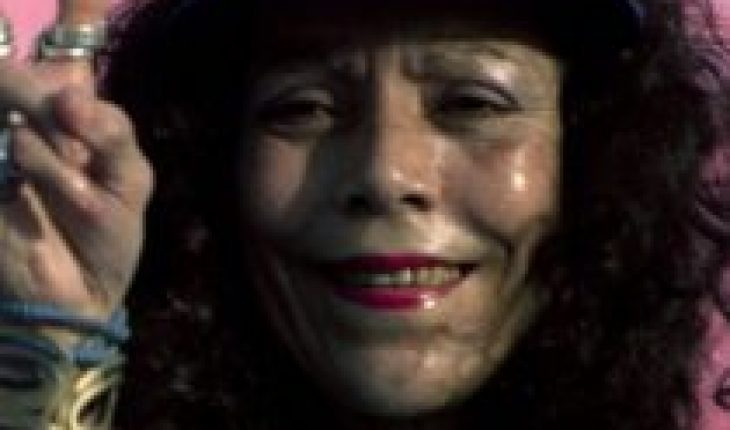
They met in the 70s, when Ortega had gone into self-exile in Costa Rica for his participation in the Sandinista movement that in July 1979 removed the Somoza dynasty from power, after a two-year civil war.
Later, as leader of the junta of what was called the “government of national reconstruction,” Ortega began a series of international tours in search of external support for the young Nicaraguan revolution.
And Murillo was always by his side.
“Rosario is very intelligent, she is a woman with a lot of training, with command of several languages. That greatly favored the accompaniment he made of Daniel (Ortega) in many international delegations,” explained, a few years ago, Monica Baltodano, a former guerrilla commander and Nicaraguan deputy in an interview with Nicaragua’s Channel 2.
Murillo was his companion. And many years later, in 2005, they were married by the church.
But “la Chayo” was, and is, much more than a first lady. In fact, he never liked the nickname.
She had in her favor to be the daughter of Zoilamérica Zambrana Sandino, niecegranddaughter of Augusto Sandino, nicaragua’s national hero and inspiration of the Sandinista revolutionary movement.
At that time it was shaping up as poet and one of the main female representatives of Nicaraguan letters. According to her own, she began writing as a necessity of expression, after the death of her first child in an earthquake in 1973.
In 1981 he began to coordinate the Board of Directors of Ventana, cultural supplement of Barricada, the official journal of the FSLN.
And during Ortega’s first presidency, between 1985 and 1990, Murillo used his influence to make culture a transcendental space in Ortega’s government plan. Culture, that was of interest to him.
Between 1988 and 1990 she was appointed director of the Institute of Culture. “A whole intense promotion of artists and writers that is still remembered with nostalgia,” said in a recent column the chronicler and historian Jorge Eduardo Arellano.
But her vision and style put her several times on a collision course with other literary figures.
“We had clashes with Rosario because not infrequently we felt authoritarianism in her style. (…) I never finished understanding what her conception of culture was,” said the late poet Vida Luz Meneses in an interview with Nicaraguan television channel 2.
And during Ortega’s 1990 re-election campaign, his advisers advised him to keep his wife low-key because of her flamboyant image.
Finally, the Sandinista National Liberation Front (FSLN) was not re-elected, nor did Murillo win a seat in the National Assembly. A decade was coming from the sidewalk of the opposition. Then Murillo came out of the public eye and while his partner was emerging as leader of the opposition she dedicated herself to build a family that would also be the political inheritance of the couple, consisting of nine children, seven of both and two from a previous relationship of Murillo.
The “rape” episode
In 1998, while Daniel Ortega remained the main leader of the opposition to the then government of Arnoldo Aleman, a bomb shook both his private life and his political career.
Zoilamérica Narváez, murillo’s daughter from another relationship before Ortega, accused his stepfather of having repeatedly raped her.
In terms of image, Ortega’s words to defend himself would not be enough. It was then that Rosario played the card perhaps most transcendent of their relationship, but in addition to their career.
“I tell you in all frankness, I have been terribly ashamed that a person with an unblemished resume was intended to be destroyed; and (that) be my own daughter the one who by that obsession and that sickly infatuation with power would like to destroy her when she did not see her ambition satisfied,” Murillo said after the scandal, completely dismissing his own daughter’s accusation.
Although the issue was prosecuted, it did not succeed since the judge in charge dismissed it because the crime was time-barred and Ortega enjoyed immunity as a former president.
“With the complaint of rape of Zoilamérica, Rosario intervenes by backing Ortega, which gives him enormous power in front of Daniel, in addition to a large account receivable. It is a very expensive bill for Ortega, “said a few years ago Dora Maria Tellez, well-known commander of the Sandinista revolution and coOrtega’s struggle mpañera that would later become his opponent, quoted by contrapoder magazine.
La Chayo 2.0
Starting with Daniel Ortega’s second term, which began in 2006, his wife was politically renewed.
Over the past ten years she has held various official positions, becoming the voice and face of her husband’s government.
“In the presidency, Rosario is 50 percent and Daniel is 50 percent,” Ortega himself said at a public conference.
As leader of the Council of Communication and Citizen Power, he wanted to give another face to the image of Nicaragua and redesigned the official images, from the colors of the flowers of public events to the national coat of arms, with bright colors, after his approach to a “New Age” philosophy.
“La Rosario has entered a complex field, somewhat esoteric, so in the writings it is not possible to distinguish when she makes a state document and when she is bringing out her own dreams or her own way of seeing life,” Meneses told Channel 2.
Your daily interventions are quite eclectic and can go from climate reports to calls for attention to public authorities.
He even installed in the main avenue of Managua a series of “trees of life” for good energy.
In her circle she does not mind being compared to Elena Ceaușescu, the wife of former Romanian leader Nicolae Ceaușescu, who in practice served as prime minister of the then communist country.
Outside her circle, her detractors compare her to a much less intellectual, but more famous figure: that of Claire Underwood, the ambitious wife of Frank Underwood, star of the Netflix series “House of Cards.”
What they agree on both sides is that today, in practice, Murillo is the face and voice of her husband’s government.
In fact, those who know from within the workings of the Nicaraguan government, say that hopened very few important decisions that are madeRan without the approval of the president’s wife.
For the same reason, her nomination as Ortega’s running mate and that in 2017 she took over as the country’s vice president did not cause much surprise within the Sandinista ranks.
*This article was originally published on BBC World in August 2016 and has been updated on the occasion of the wave of arrests in the Central American nation.





